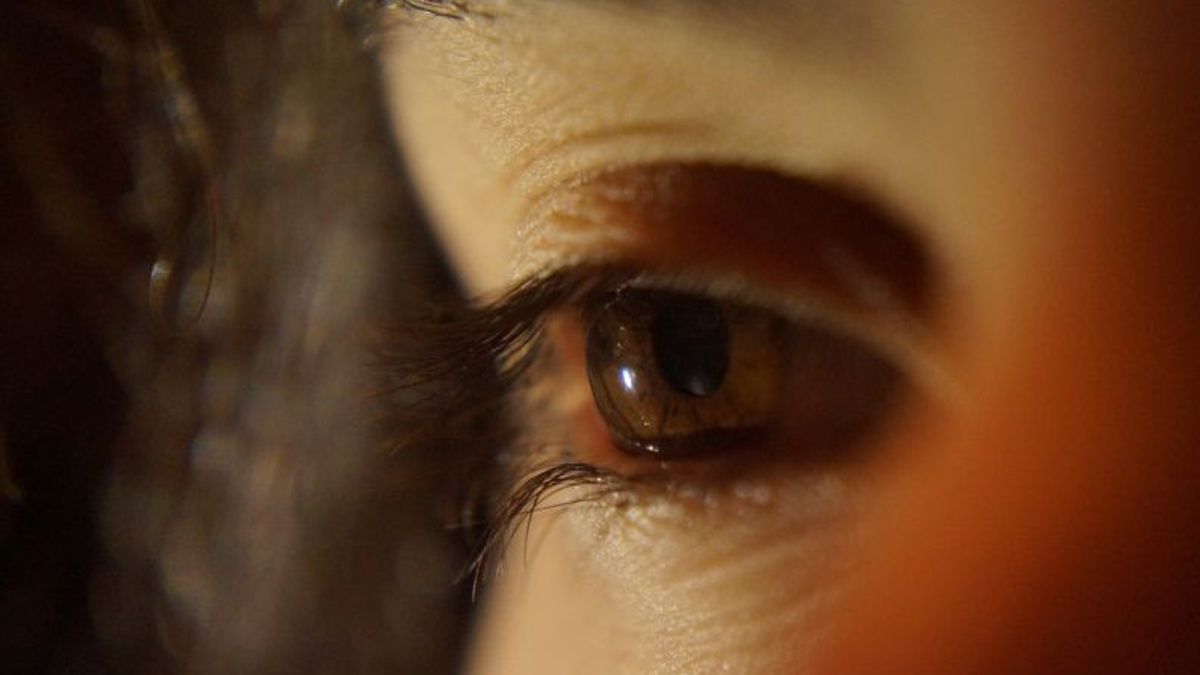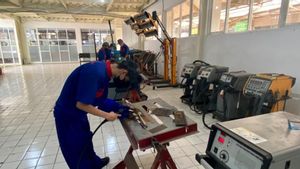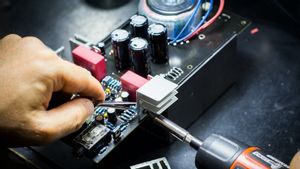
JAKARTA - Just like other diseases that require early treatment, so does AMD or age-related macular degeneration (AMD) so that it doesn't end up worsening the condition. In the case of AMD, especially the wet type, patients can experience worsening vision conditions if they do not get treatment.
General Chairperson of the Indonesian Ophthalmologist Association (PERDAMI), dr. M. Sidik, Sp.M(K) said that visual impairment and blindness due to AMD occur slowly and progressively, requiring close monitoring and doctor's control and regular treatment.
He acknowledged that the COVID-19 pandemic situation could complicate treatment, but patients are expected to remain enthusiastic and not afraid to go to the hospital to get treatment so that their vision conditions do not worsen and reduce their quality of life.
AMD is damage to the macula, which is the focal center of vision on the retina of the eye. The occurrence of changes in the anatomy of the macula causes visual disturbances ranging from shape distortion or blurry vision to blindness in central vision.
As a result, patients cannot read, write and even see the faces of the people in front of them, said a consultant ophthalmologist from RSCM-FKUI, Dr.dr. Gitalisa Andayani, Sp.M(K).
"This shows that AMD is an eye disease that needs to be watched out for," she said in a statement quoted by Antara, Sunday.
The worldwide prevalence of early-stage AMD in patients aged 45 and 85 years is about 8 percent and advanced AMD is 0.4 percent. It is estimated that nearly 288 million people are estimated to have AMD by 2040. Indonesia, based on the Data and Information Center of the Ministry of Health in 2018, is one of the five countries with the most visually impaired population besides China, India, Pakistan, and the United States.
AMD is divided into two types, namely dry AMD and wet AMD. In dry AMD, there is gradual macular damage, usually over years as retinal cells die and do not regenerate. Gitalisa said, about 10-15 percent of dry AMD will develop into wet AMD.
While in wet AMD, abnormal blood vessel growth occurs into the macula resulting in bleeding or fluid accumulation in the macula. As a result, scar tissue will develop on the macula which causes the patient to lose central vision or become blind. Wet AMD is known to often progress very quickly and cause significant vision loss.
Risk factors and treatment
Age is a major risk factor for AMD. This condition usually occurs in those over the age of 60, but it can occur earlier. On the other hand, genetics and smoking habits can also increase a person's risk of developing AMD.
"Those who have these risk factors must be vigilant, because if not treated properly, AMD can lead to complications to blindness, and even affect mental health such as a higher risk of depression and social isolation," said Gitalisa.
In terms of treatment, dry AMD usually does not result in total vision loss, and there is currently no effective treatment.
This is different from the therapy for wet AMD which has experienced rapid development in the last two decades, one of which uses Aflibercept to inhibit antivascular endothelial growth factor (VEGF).
Therapy with Aflibercept is done by giving an injection into the eyeball (intravitreal), to slow the growth of abnormal blood vessels and prevent further macular damage, thereby preventing blindness.
The ALTAIR study in 2020 showed that intravitreal Aflibercept therapy in patients with wet-type AMD can extend the treatment interval in the treat-and-entend (T&E) regimen with an adjustment of 2 weeks or 4 weeks.
Treatment results showed improvement in vision and macular anatomy in patients who had not previously used treatment for 52 weeks, while reducing the burden of treatment.
This study shows as many as 40 percent of patients can seek treatment every 4 months, and another 60 percent every 3 months. Previously, patients had to come for wet AMD treatment once every 2 months.
Gitalisa hopes that with longer therapy intervals, especially during the current COVID-19 pandemic, the number of visits and the patient's economic burden can be reduced.
Intravitreal Aflibercept therapy is said to be effective in one sub-type of wet-type AMD, namely Polypoidal Choroidal Vasculopathy (PCV), which occurs most often in Asian races, hence the name "Asian AMD". About 25-50 percent of Asian patients with AMD also have PCV.
During the current pandemic, patients, especially wet type AMD, are expected to no longer worry about undergoing treatment in the hospital.
Furthermore, especially for those who do not have AMD or other visual impairment conditions, according to the appeal on World Sight Day 2021, Gitalisa reminds them not to forget to do an eye examination at least once a year, especially when they start turning 40 years old, as well as to detect various degenerative eye disorders, including AMD.
SEE ALSO:
In order to support the detection and treatment of various eye diseases, PERDAMI participates in organizing knowledge update forums and continuous training for ophthalmologists.
They also collaborate with companies in the life sciences related to health and agriculture to increase knowledge and awareness of patients and their families in dealing with AMD.
Head of Medical Pharmaceuticals PT Bayer Indonesia, Dr. Dewi Muliatin Santoso believes that collaboration and cooperation with PERDAMI is an important step in dealing with AMD, which according to her affects the quality of life and the economic burden of the community.
The English, Chinese, Japanese, Arabic, and French versions are automatically generated by the AI. So there may still be inaccuracies in translating, please always see Indonesian as our main language. (system supported by DigitalSiber.id)

















